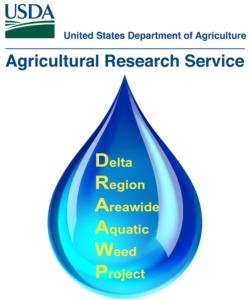From the Journal of Aquatic Plant Management—Special Issue Vol. 59s 2021
An overview of the Delta Region Areawide Aquatic Weed Project for improved control of invasive aquatic weeds in the Sacramento–San Joaquin Delta
Patrick J. Moran, John D. Madsen, Paul D. Pratt, David L. Bubenheim, Edward Hard, Thomas Jabusch, and Raymond I. Carruthers
Abstract
The 27,540-ha (68,000-acre) Sacramento–San Joaquin River Delta of northern California is the largest freshwater estuary on the western coast of the United States. The Delta provides irrigation water for over $30 billion in crops in the Delta and Central Valley and drinking water for 27 million people, supports $300 million in recreational boating, and includes the ports of West Sacramento and Stockton. The Delta's sloughs, wetlands and riparian habitats host 56 threatened or endangered species. Invasions by nonnative aquatic weeds constitute a major environmental challenge. The USDA–ARS Areawide Pest Management Program focuses on integrated, adaptive control of invasive pests, by supporting implementation of new, science-based control solutions. The Delta Region Areawide Aquatic Weed Project (DRAAWP) was funded from 2014 to 2018 to improve control of floating water hyacinth [Eichhornia crassipes (Mart.) Solms], submersed Brazilian waterweed (Egeria densa Planch.), and riparian arundo (Arundo donax L.) in the Delta. Outputs from the DRAAWP are now informing control of nine aquatic weeds and arundo using adaptive, integrated chemical, mechanical, and biological approaches. Project outputs include improved knowledge of aquatic weed growth and dispersal, models of watershed nutrients, weed control prioritization protocols based on remote sensing and economic cost modeling, and new tools. Outcomes include the implementation of use of new herbicides and biological control agents, improved control efficacy, lowered stakeholder costs, and the leveraging of expertise and funding focused on aquatic weed control for habitat restoration. Benefits include reduced floating aquatic weed coverage, conservation of water and wildlife natural resources, and protection of boating and other economic activities.
Authors (visit the DRAAWP website for the authors' contact information)
- Patrick J. Moran, Research Entomologist, U.S. Department of Agriculture (USDA)–Agricultural Research Service (ARS), Western Regional Research Center, Invasive Species and Pollinator Health Research Unit (ISPHRU)
- John D. Madsen, Research Biologist, USDA–ARS ISPHRU, Department of Plant Sciences, University of California, Davis
- Paul D. Pratt, Research Leader, U.S. Department of Agriculture (USDA)–Agricultural Research Service (ARS), Western Regional Research Center, Invasive Species and Pollinator Health Research Unit (ISPHRU)
- David L. Bubenheim, Senior Scientist, National Aeronautics and Space Administration (NASA)–Ames Research Center
- Edward Hard, Chief, Aquatic Invasive Species Branch, Division of Boating and Waterways, California Department of Parks and Recreation,
- Thomas Jabusch, Senior Environmental Scientist, Invasive Species Program, Habitat Conservation Planning Branch, California Department of Fish and Wildlife
- Raymond I. Carruthers, Research Entomologist and Research Leader (Retired), USDA–ARS ISPHRU
